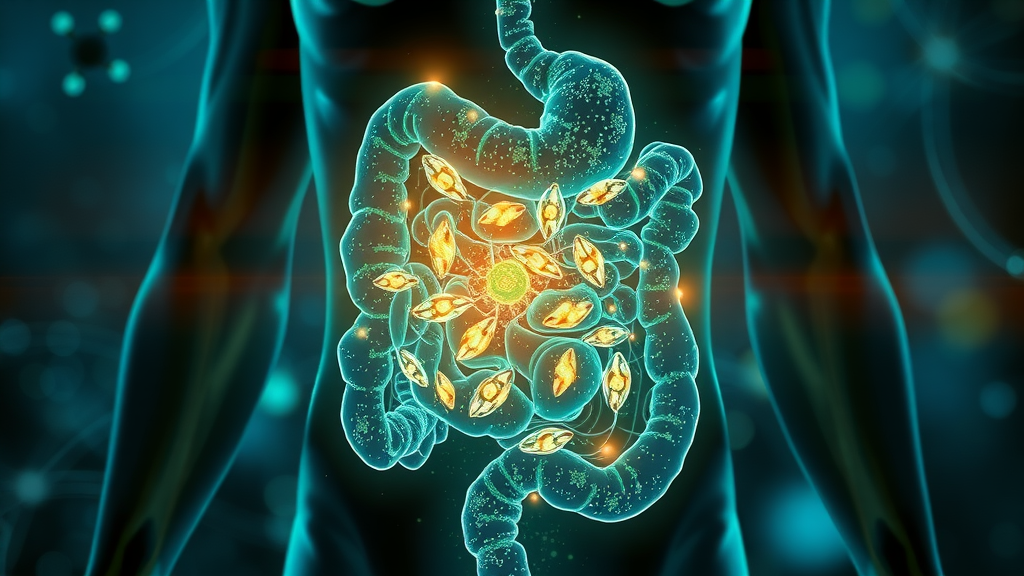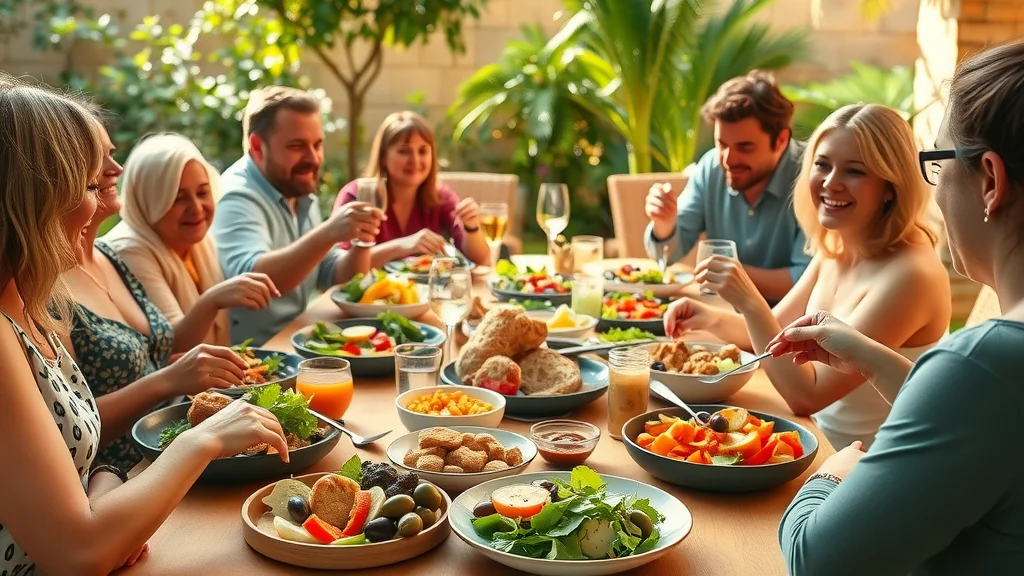Did you know whole foods can slash your risk of chronic disease by up to 30%? Discover the powerful health benefits of eating a whole foods diet rich in lean meat and healthy fats, and how it can transform your energy, immunity, and overall well-being starting today.

In a world flooded with processed snacks and added sugars, the shift toward a diet rich in whole foods is gaining traction for good reason. Not only do whole foods fuel your body in their natural state, but they also serve as powerful protectors against chronic disease, boosting your energy and vitality in the process.
If you’ve ever wondered what it’s actually like to fill your plate with fruits, vegetables, lean meats, and whole grains, this guide will break down the benefits of eating a whole foods diet and show you how easy it is to embrace healthy eating—one bite at a time.
The Health Benefit of Choosing Whole Foods
Whole foods diets have taken center stage in the conversation about modern healthy eating, standing out as a proven way to enjoy long-term health benefits and overall well-being through balanced nutrition and reduced processed foods. Unlike processed food, whole foods come in their minimally processed form, often as close as possible to the way nature intended.
That means more natural nutrients, fiber, and phytonutrients in every bite. Swapping processed foods for whole food alternatives is more than a trend—research now shows it can significantly reduce your risk of chronic disease, improve blood sugar control, and lower saturated fat intake, including risks for heart disease, type 2 diabetes, and certain cancers.
Embracing a diet high in fruits and vegetables, lean meat, unprocessed grains like brown rice, legumes, and healthy fats does more than keep you full—it gives your body the tools it needs for vitality, longevity, and disease prevention. The benefits of eating a whole foods diet are as rich and rewarding as the colorful plates you’ll be serving up.
As you focus on nourishing your body with whole foods, it's also important to consider how your daily habits and specific nutrients can impact your mental clarity and energy. For those interested in optimizing cognitive function alongside physical health, exploring how certain foods and beverages like caffeine can help reduce brain fog may offer additional strategies for feeling your best.
Did You Know? The Science Behind Whole Foods and Health Benefits
Scientific research continues to uncover just how transformative a shift in eating pattern can be when you replace processed foods with whole, unprocessed foods. According to leading studies, a whole foods diet—rich in vegetables, fruits, nuts and seeds, and lean meats—offers a dense array of vitamins and minerals essential for healthy living. Unlike processed foods, which are often loaded with added sugar, saturated fat, and artificial additives, unprocessed foods retain vital plant compounds shown to protect your heart, lower blood pressure, and stabilize blood sugar.
Medical experts—including registered dietitians—stress that people who eat a whole food diet enjoy not just lower rates of chronic diseases, but improved digestive health, energy, and mental clarity. In the sections ahead, you’ll discover the science-backed benefits of eating a whole foods diet, understand the specific nutrients involved, and see how making simple swaps can unlock a healthier, more vibrant you.

Understanding the Benefits of Eating a Whole Foods Diet
Definition: What Is a Whole Foods Diet?
A whole foods diet focuses on eating foods that are as close as possible to their natural state, with minimal processing or refinement, emphasizing lean meat, whole grains, and healthy fatty acids. This means filling your meals with unprocessed foods like fresh fruits and vegetables, lean meats, fish, whole grains (think brown rice and oats), nuts and seeds, legumes, and healthy plant oils. In contrast, processed foods often contain added sugars, preservatives, saturated fat, and other ingredients that strip away natural nutrients.
Whole foods provide your body with the full spectrum of phytonutrients, dietary fiber, and antioxidants, all of which play a critical role in reducing the risk of chronic disease. Embracing a whole foods diet means you’ll eat more foods grown from the earth and fewer foods made in factories—delivering lasting results for your energy, weight, and overall well-being.
How Eating Pattern Impacts Health
Your eating pattern—what you consistently consume each day—has a profound impact on your risk of chronic disease, metabolic health, and even your mood. Studies show that people who follow a diet high in whole foods, especially plant foods, experience significant health benefits, from lower blood pressure and cholesterol to improved blood sugar control. On the other hand, a diet high in processed food and added sugar is strongly linked with increased rates of obesity, type 2 diabetes, and heart disease.
By making your eating pattern revolve around whole, unprocessed foods, you aren’t just choosing better calories—you’re packing your diet with protective nutrients that help your cells function at their best, reduce inflammation, and promote long-term healthy eating habits. The more you can replace processed foods with real, whole ingredients, the more robust and resilient your health will become.
"A whole foods diet is the foundation of lasting health." – Registered Dietitian

Key Health Benefits of Eating a Whole Foods Diet
Improved Energy and Vitality
Switching to a whole foods diet, rich in lean meat and essential fatty acids, can lead to dramatic improvements in energy and daily performance. Whole foods offer complex carbohydrates, quality proteins, and essential fatty acids that deliver sustained fuel throughout the day. By avoiding heavily processed foods high in added sugar or refined grains, you sidestep the energy crashes and mood swings associated with rapid blood sugar spikes.
Instead, the slow-digesting fibers and nutrients in whole foods help you maintain steady sugar levels, keeping your mind sharp and your body active. People who make this transition often report waking up refreshed, experiencing better concentration at work or school, and even finding an extra boost to their workouts and daily routines. In essence, eating whole foods ignites your body’s natural engine, building the foundation for improved vitality and stamina.

Strengthened Immune System
Immune health thrives on a nutrient-dense whole foods diet filled with vitamins, minerals, antioxidants, and fiber. Fruits and vegetables provide a potent mix of nutrients—like vitamin C, vitamin A, and zinc—which are precisely what your immune system needs to fight infection and inflammation. On the flip side, processed foods often crowd out these beneficial nutrients with excess added sugar and unhealthy fats, leaving your body more susceptible to illness.
With every whole food-rich meal, you supply your body’s natural defenses with the tools they need to guard against viruses, bacteria, and chronic disease. Registered dietitians frequently cite this as a key health benefit, noting that a whole foods eating pattern supports faster recovery, fewer sick days, and improved resilience during seasonal changes.
Lowering Risk of Chronic Disease
One of the most well-documented health benefits of eating a whole foods diet is the reduced risk of chronic diseases such as heart disease, type 2 diabetes, and certain cancers, largely due to lower intake of processed foods and saturated fat. Studies indicate that diets high in unprocessed foods—especially plant foods like fruits, vegetables, and legumes—can significantly lower risk markers for heart disease, including cholesterol, blood pressure, and systemic inflammation. These effects are amplified when you limit or eliminate processed foods, which typically contain excess saturated fat, sodium, and preservatives.
Whole grains like brown rice, unprocessed lean meats, and healthy fats from nuts and seeds all play a powerful role in keeping your body balanced, your arteries clear, and your cells protected from oxidative damage. Making a conscious choice to prioritize whole foods can set you on a path away from chronic disease and toward a future of optimal health.
Enhanced Digestion and Gut Health
The natural fibers found in whole foods act as a powerful aid to digestion, supporting gut bacteria and regularity. Fruits, vegetables, whole grains, and legumes are packed with prebiotic fibers that feed “good” gut flora, creating a balanced digestive environment. This improved gut health does more than just keep you regular—it supports your immune system and helps the body absorb nutrients more efficiently. In contrast, processed foods, lacking in dietary fiber and loaded with additives, can disrupt gut bacteria and contribute to issues like bloating, constipation, or even inflammatory gut conditions. A diet high in unprocessed foods not only supports smoother digestion but can also dramatically improve your sense of well-being, both physically and mentally.

Blood Sugar Control and Stability
Stable blood sugar is essential for avoiding mood swings, cravings, and long-term risk of diabetes. Whole foods—particularly those with a low glycemic index like whole grains, legumes, and most non-starchy vegetables—help regulate how sugar enters your bloodstream. Unlike processed foods, which cause rapid spikes and crashes in blood sugar level due to added sugars and refined starches, whole foods promote a slow and steady release of glucose.
This not only decreases your risk for type 2 diabetes but can also lead to better energy management, improved focus, and reduced feelings of hunger throughout the day. Focusing your eating pattern on whole foods means you’ll experience fewer “energy slumps” and enjoy more consistent productivity and mood.
The Role of Nutrients in a Whole Foods Diet
Essential Vitamins and Minerals from Whole Foods
Whole foods supply your body with an incredible diversity of vitamins, minerals, and healthy fatty acids—the foundational building blocks for energy, immunity, cognitive function, and overall wellness. Fruits and vegetables are standout sources of vitamin C, potassium, folate, and antioxidants, while whole grains provide magnesium and B-vitamins needed for metabolism and nerve function.
Lean meats, fish, beans, and nuts pack critical protein, iron, and zinc. These naturally occurring nutrients are far more absorbable than the isolated vitamins sometimes added back into fortified processed foods. Eating a whole foods diet means you’re nourishing your cells, organs, and immune system in the most efficient way possible, allowing your body to thrive and recover from daily stress.

Healthy Fatty Acids: Omega-3s and Their Benefits
Healthy fatty acids, especially omega-3s, play a crucial role in reducing inflammation, supporting heart health, and even improving mental function. These beneficial fats are found in abundance in whole foods like fatty fish (salmon, sardines), walnuts, chia seeds, and flaxseeds. Unlike many processed foods, which typically contain unhealthy trans and saturated fat, whole foods provide the type of fats that actually protect against heart disease and support healthy brain activity.
Omega-3 fatty acids also help stabilize blood sugar level and promote healthier cholesterol ratios, supporting your body’s fight against chronic diseases. Including a variety of plant and seafood-based sources of omega-3s in your diet is a simple yet impactful way to harness all the health benefits of whole foods.
Whole Foods vs Processed Foods: A Critical Comparison
Comparison Table: Whole Foods vs. Processed Foods
Factor |
Whole Foods |
Processed Foods |
|---|---|---|
Nutritional Value |
High in fiber, vitamins, minerals, phytonutrients, and healthy fatty acids |
Low in fiber and some nutrients, can be fortified but often lack key phytochemicals |
Additives |
Minimal or none |
Contain preservatives, added sugar, saturated fat, sodium, and artificial flavors |
Impact on Blood Sugar |
Stabilizes blood sugar level through slow-digesting carbs |
Often causes rapid spikes and crashes in blood sugar |
Link to Chronic Disease |
Associated with reduced risk of heart disease, diabetes, and obesity |
Linked with increased risk of chronic diseases and inflammation |
Satiety |
Promotes full, sustained energy and healthy weight |
Often promotes overeating and cravings |
Negative Impact of Processed Food and Processed Foods
Processed food products—especially those high in added sugars, saturated fat, and chemical additives—carry significant health risks and undermine the health benefits of a whole foods diet. Diets filled with processed foods are closely linked to an increased risk of obesity, high blood pressure, metabolic syndrome, and other chronic diseases. Processed foods tend to be energy-dense and nutrient-poor, meaning you get extra calories but little in the way of vitamins, minerals, or fiber.
Over time, these empty calories can disrupt hormonal balance, trigger inflammation, and raise blood pressure or blood sugar levels. The shift away from a diet high in processed food toward whole foods is a proven way to strengthen your health, improve mood, and reduce your risk of disease—making every meal a step toward long-term wellness.

Saturated Fat in Processed Food vs. Whole Foods
The type and amount of fat you eat matters, especially when it comes to your heart’s health. Processed food is notorious for its high content of saturated fat and trans fats, both of which have been shown to increase blood cholesterol levels and the risk of heart disease. In contrast, whole foods—such as avocados, nuts and seeds, fish, and lean meat—contain primarily healthy unsaturated fats and minimal saturated fat. Shifting the balance away from processed foods toward whole food sources of fat can significantly reduce your cardiovascular risk. Choosing olive oil over margarine, nuts over chips, or grilled chicken over processed lunch meats are all simple swaps that can dramatically improve your long-term health outcomes.
"Diets rich in processed foods are linked with increased health risks." – Nutrition Expert
Real-World Outcomes: Health Benefit Success Stories
Weight Loss and Management Using a Whole Foods Diet
Among the most celebrated health benefits of switching to a whole foods diet is sustainable weight loss and easier weight management, supported by nutrient-dense lean meat and fiber-rich plant foods. Whole foods are naturally lower in calories and higher in fiber than most processed options, which means you can eat satisfying portions while feeling energized and satisfied. Multiple success stories point to people losing weight effortlessly by making simple swaps, cutting down on added sugars, and swapping refined grains for whole grains like brown rice.
Unlike restrictive crash diets, a whole foods approach is not about deprivation but about abundance—abundance of vitamins, minerals, and flavor. Real-life transformations often highlight how removing processed foods leads to not just weight loss, but greater confidence, improved mood, and lasting healthy eating habits.

How Lean Meat and Plant-Based Proteins Support Healthy Eating
Incorporating lean meats—such as chicken, turkey, and fish—alongside plant-based proteins like beans, lentils, tofu, and nuts offers a winning formula for balanced, healthy eating that supports weight loss and stable blood sugar. These protein sources provide all the essential amino acids your body needs for muscle repair, satiety, and metabolic function, without the excess saturated fat and additives often present in processed foods.
Focusing your meals on lean meats and plant foods delivers fiber, vitamins, and minerals, helping you stay full longer and maintain stable blood sugar levels. As many registered dietitians recommend, prioritizing a mix of these protein sources throughout your eating pattern not only supports healthy weight maintenance but also maximizes the unique health benefit each food group provides.
Top 7 Foods to Include for Maximum Benefits of Eating a Whole Foods Diet
Leafy greens (spinach, kale, Swiss chard)
Berries (blueberries, strawberries, raspberries)
Whole grains (brown rice, quinoa, oats)
Lean meat and fatty fish (chicken breast, salmon, sardines)
Nuts and seeds (almonds, chia seeds, walnuts)
Legumes (lentils, chickpeas, beans)
Colorful vegetables (bell peppers, broccoli, carrots)

Simple Swaps: Replacing Processed Food with Whole Food Alternatives
Swap white bread for 100% whole grain bread
Replace sugary soda with sparkling water infused with fruit
Opt for steel-cut oats over instant oatmeal packs
Choose fresh fruit over packaged candies
Cook with olive oil instead of processed margarine
Enjoy homemade popcorn instead of bagged chips
Replace flavored yogurt with plain yogurt and fresh berries
People Also Ask: Common Questions About the Benefits of Eating a Whole Foods Diet
Why is a whole food diet good for you?
A whole foods diet is good for you because it provides essential nutrients, fiber, and antioxidants that help protect against chronic disease and maintain healthy blood sugar, weight, and blood pressure levels. By prioritizing minimally processed foods over processed foods high in added sugar and saturated fat, you nourish your body with the building blocks for energy, repair, and immunity. Most people find their energy improves, their cravings decrease, and their health markers (like cholesterol and blood sugar level) move in a positive direction.
What happens to your body if you only eat whole foods?
Switching to a diet based entirely on whole foods triggers a cascade of positive changes. Your digestive system adapts to more dietary fiber, resulting in better gut health and regularity. Because you consume less added sugar and saturated fat, your risk for obesity, heart disease, and type 2 diabetes drops. You’ll likely notice improved mood, more stable energy, and easier weight management. In essence, your body moves toward optimal function and away from disease.
What are the downsides of a whole food diet?
While the health benefits of eating a whole foods diet are significant, there are occasional downsides to consider. Preparation time for meals might increase, and some people find it challenging to source certain foods year-round. Additionally, those with specific dietary needs (such as athletes or individuals with medical conditions) should tailor their whole foods intake accordingly. However, with planning, these challenges are minor compared to the major health benefit gains.
What is the #1 healthiest food to eat?
There’s no single “#1” healthiest food, but nutrition experts agree that foods like leafy greens, berries, and fatty fish are among the top choices. Spinach, kale, and Swiss chard (leafy greens) provide an exceptional balance of vitamins, minerals, and plant compounds that promote heart, brain, and overall health—making them powerhouses in any whole foods eating pattern.

FAQs: Addressing Your Concerns About Eating a Whole Foods Diet
Can I get all my nutrients from a whole foods diet?
Yes, a well-planned whole foods diet can provide all essential vitamins, minerals, and macronutrients, especially when you include a wide variety of plant foods, lean meats, and healthy fats.Is a whole foods diet suitable for families and children?
Absolutely. Whole foods are safe and beneficial for all ages, supporting healthy growth, immunity, and energy for children and adults alike.How can I start switching from processed foods to whole foods?
Begin with simple swaps (brown rice over white, whole fruit for dessert) and gradually increase your intake of unprocessed foods at each meal. Batch cooking and meal planning can help make the transition easier.Are there budget-friendly ways to eat a whole foods diet?
Yes! Focus on seasonal produce, frozen vegetables, dried legumes, and bulk whole grains. These foods are affordable, filling, and versatile.
Conclusion: Embracing the Lasting Health Benefits of Eating a Whole Foods Diet
Start integrating more whole foods into your meals today and experience more energy, stronger health, and lasting wellness for years to come!
If you’re inspired to take your wellness journey even further, consider how your environment and lifestyle choices can amplify the benefits of a whole foods diet. Spending time outdoors and connecting with nature has been shown to complement healthy eating by reducing stress, improving mood, and supporting overall well-being. Discover why many health professionals now recommend incorporating regular time in nature as part of a holistic approach to health. By pairing mindful nutrition with restorative outdoor experiences, you can unlock a more balanced, vibrant, and resilient lifestyle.
Sources
Harvard Health – https://www.health.harvard.edu/nutrition/whole-foods-plant-based-diet
Academy of Nutrition and Dietetics – https://www.eatright.org/food/nutrition/healthy-eating
American Heart Association – https://www.heart.org/en/healthy-living/healthy-eating
Incorporating whole foods into your diet offers numerous health benefits, including improved heart health, stabilized blood sugar levels, and enhanced digestion. For a comprehensive overview, consider reading 7 Health Benefits of a Whole Foods Diet, which delves into these advantages in detail.
Additionally, Benefits of Eating Whole Foods: How a Whole-Food Plant-Based Diet Supports Optimal Health explores how such a diet can positively impact mental health and aid in weight management. If you’re serious about enhancing your well-being through nutrition, these resources will provide valuable insights and practical guidance.
 Add Row
Add Row  Add
Add 




Write A Comment